When we walk we can walk with our ancestors and future generations. Maybe they had to walk with sorrow; perhaps they were forced to march or migrate. When we walk freely, we are walking for them.
– Thich Nhat Hanh
Mount Koya
The start and end point of the Shikoku 88 Temple Pilgrimage is Mount Koya (Koyasan) in Wakayama Prefecture on Honshu island. It was settled by Kūkai and remains the headquarters of Shingon Buddhism.
Koyasan is a small, secluded temple town developed around the sect’s headquarters that Kukai built on Mt Koya’s wooded mountaintop.
Kukai began construction on the original Garan temple complex in 826 after wandering the country. For years he searched for a suitable place to center his religion. Since then over one hundred temples have sprung up along the streets of Koyasan.
The most important among them are Kongobuji, the head temple of Shingon Buddhism, and Okunoin, the site of Kōbō Daishi’s mausoleum.
Kukai sensed the end approaching and is said to stop taking food and water, and spent much of his time absorbed in meditation. At midnight on the 21st day of the third month (835) Kukai breathed his last breath at the age of 62.
However Kukai was not given the traditional cremation, but instead was interred in accordance with his will, on the Eastern peak of Mt Koya.
Legend has it that Kukai has not died but entered into an eternal samadhi (or deeply concentrated meditation) and is still alive on Mt Koya, awaiting the appearance of the next Buddha Maitreya.
He was posthumously named Kōbō Daishi.
Kōbō Daishi came to be regarded as a Bodhisattva who had come to earth in order to bring relief from suffering to the time between Shakyamuni Buddha, and Maitreya, which is said to be characterised by increasing disorder and decay.
Bus chat
A bus from the cable car stop takes visitors into town. The 10 degree temperature drop is noticed immediately. It is a hot day, so it feels good.
I met a nice woman from Shikoku on the cable car who came to visit and clean her grandmother’s grave here in Koyasan. This is the second time on my trek meeting someone who had a relative buried at a temple. In my mind, I think that being buried in a grave on Koyasan is a great blessing. It seems that people, great and not so great, desire to be buried on Koyasan as close as possible to Kobo Daishi.
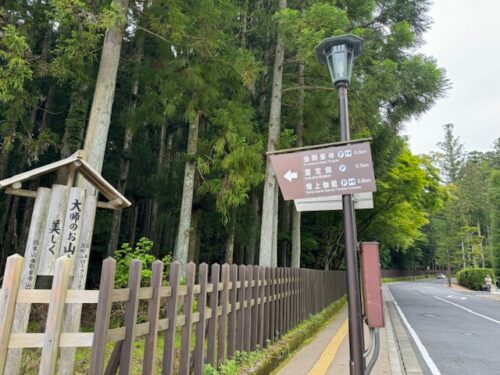
A bus takes visitors on a circular route around the town. I got off the bus in the town center to walk to the Garan Temple complex. My new friend continued on her way to the cemetery to honor her ancestor.
I started walking around town. Following the street signs, I feel my stomach fluttering while I walk. Nervous does not describe fully how I feel. I am taking in this wondrous place while I contemplate the end of my pilgrimage. As I said before when I reached temple 88 on Shikoku, I feel sad and happy.
Kongobun-ji
Temple of the Diamond Mountain
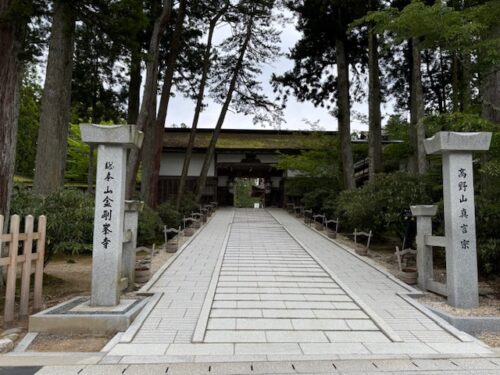
Entrance to the main temple building or Hondo.
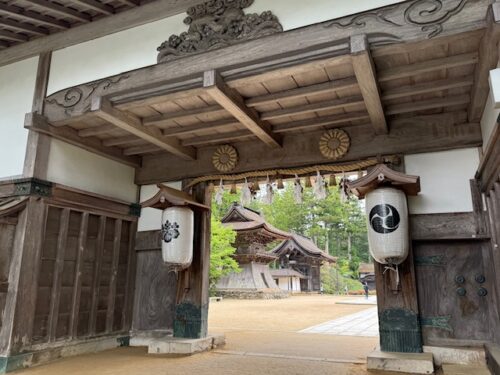
The temple gate.
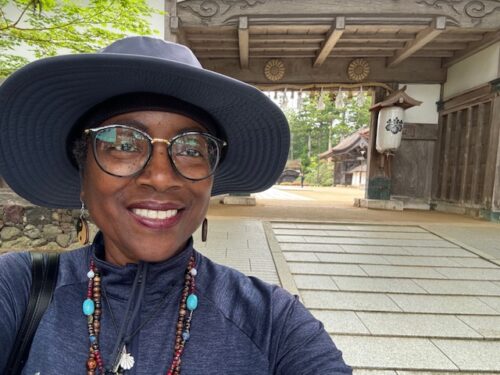
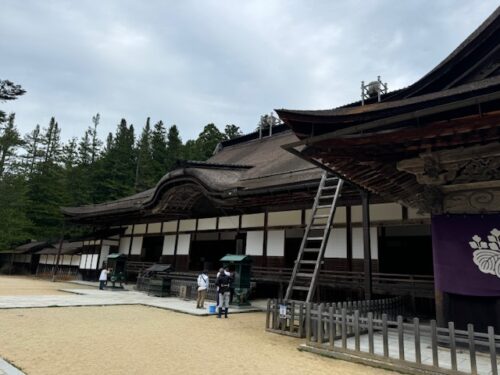
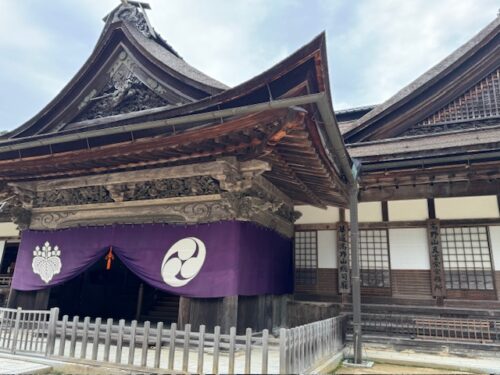
Kongobun-ji is the head temple for Shingon Buddhism in Japan.
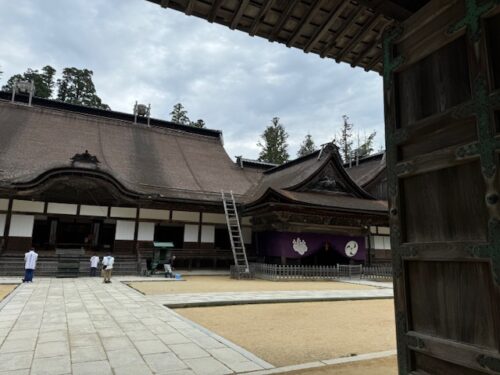
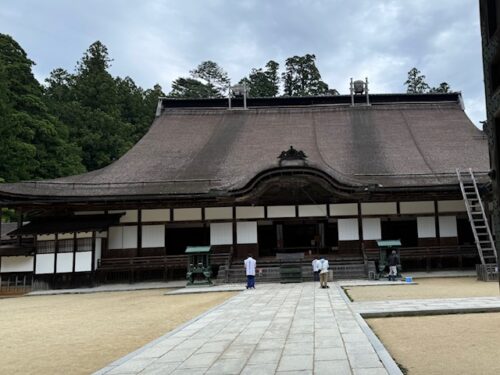

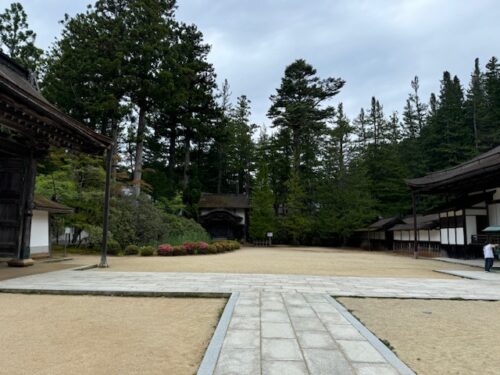
A nice view of the expansive temple plaza.
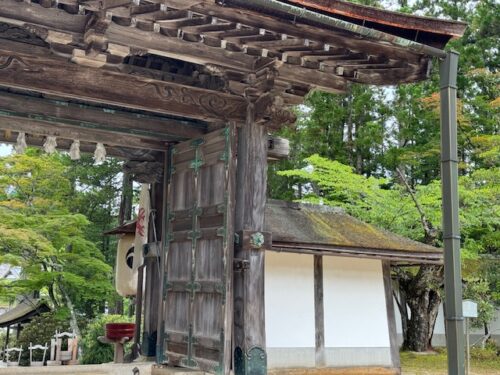
Second gate
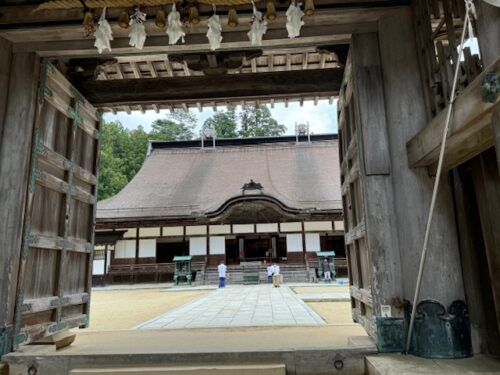
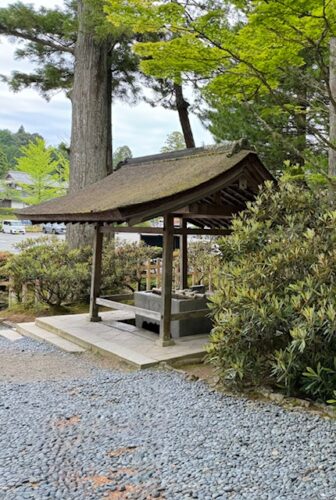
A granite fountain for ablutions stands outside the second temple gate.
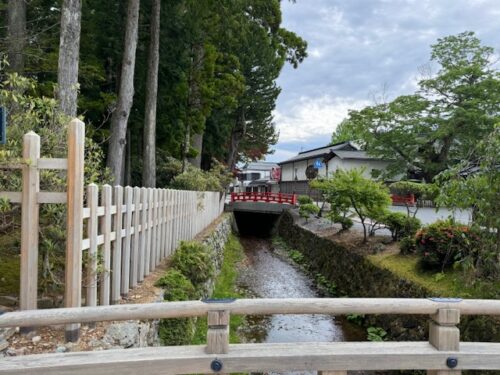
A small stream runs alongside the temple walls.
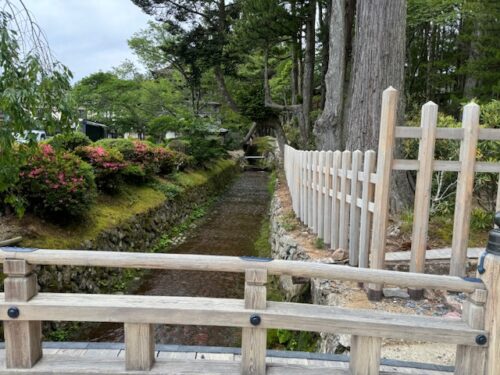
The bell outside the temple grounds sounds regularly.
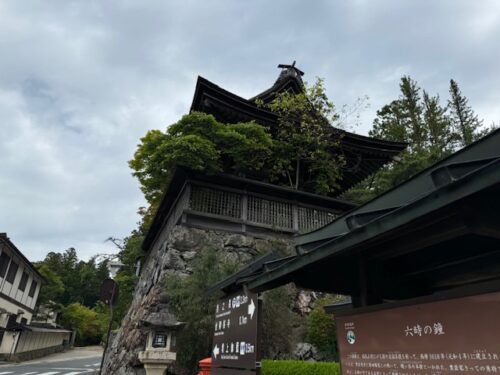
Rokuji no Kane
Enclosed behind a tall stone wall at the entrance to the monastery is this bell tower. It was built by Masanori Fukushima in the fourth year of the Genna era (1618) as a wish for his parents’ repose in the next realm. Fukushima is known as one of the Seven Spears, the most fearless generals of the Toyotomi clan.from the battle of Shizugatake between Toyotomi Hideyoshi and Shibata Katsuie. In Kan’ei 7 (1640), Masanori’s son, Masatoshi, recast the bell. The bell is still rung today to announce the time.
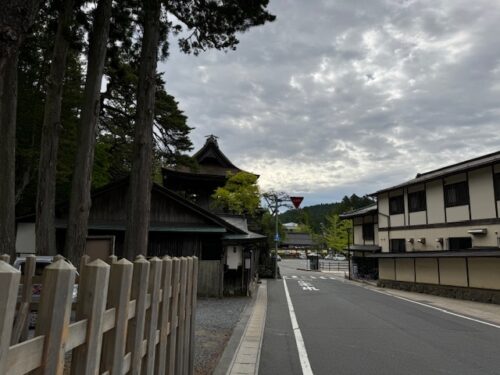
Danjo Garan temple complex
Also called the Sacred Precinct, Danjo Garan is a vast complex. Numerous halls and significant images are here. The buildings are quietly impressive. Just being enclosed with these structures, calmed me down but I felt that I would not be able to really see and understand everything. I soon realized that I could visit and revisit this place and see something different every time.
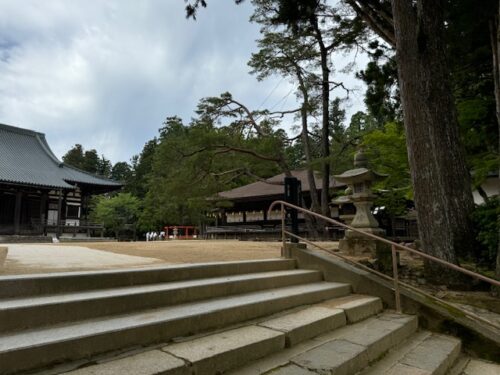
Steps leading up to the grounds of the Garan temple complex.
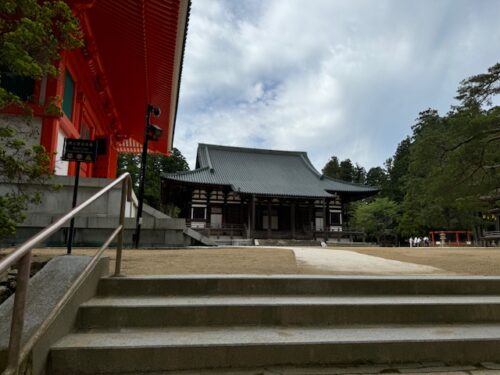
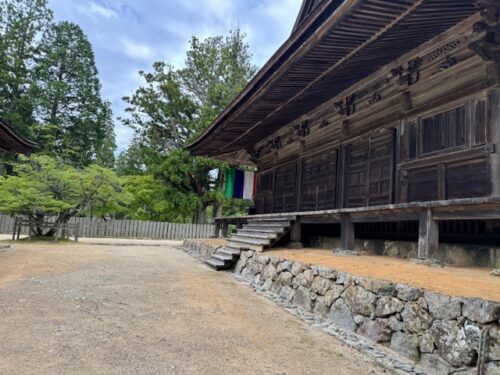
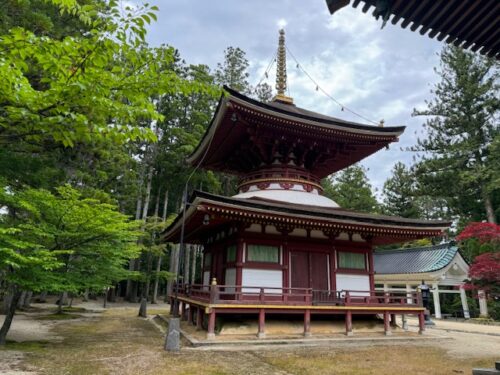
Toto pagoda was built in 1127, burned down in 1843 and rebuilt in 1984.
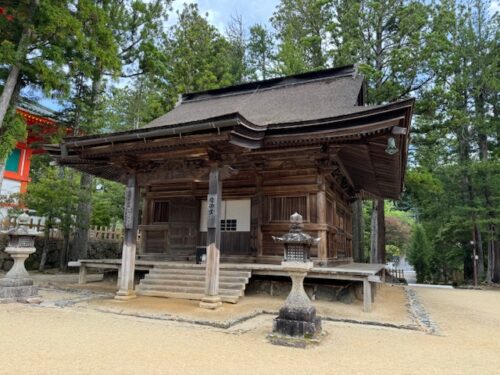
Aizendo
In the first year of Kenmu (1334), Emperor Go-Daigo ordered this hall to be built as a prayer for world peace and longevity of the emperor.
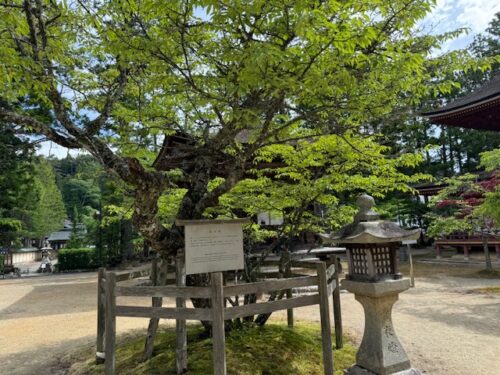
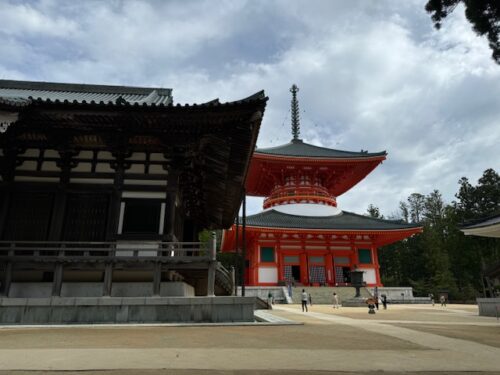
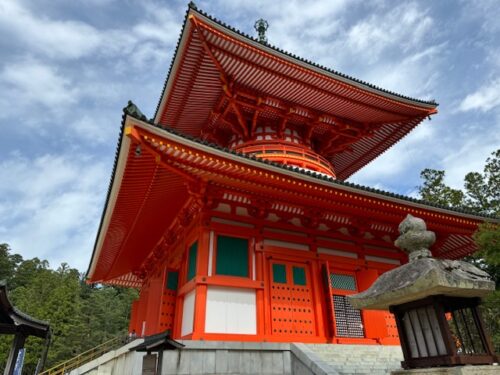
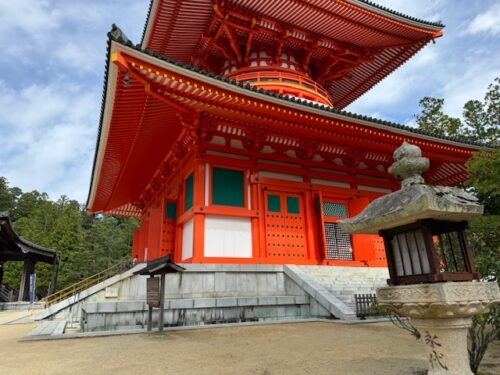
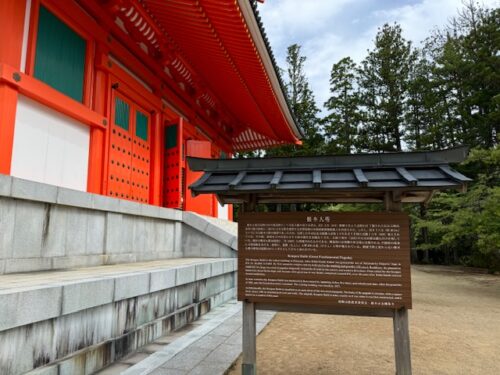
Konpon (principal) Daito pagoda
Japan’s first square two-storied pagoda.
Kobo Daishi and his successor Shinzen Daitoku devoted themselves to the construction of this pagoda, which took from 816 through 887. Kobo Daishi referred to this pagoda as a representation of the universe. It was a central training dojo for the Shingon sect.
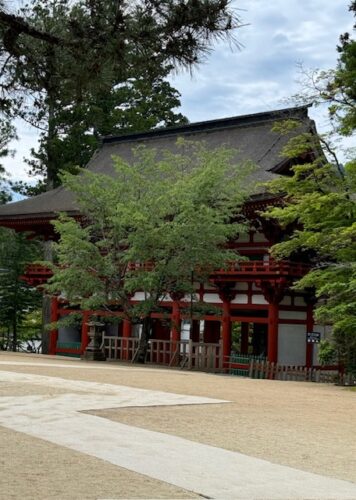
Chumon, a two-storied gate located at the lowest elevation on the Garan temple complex or Donjo.
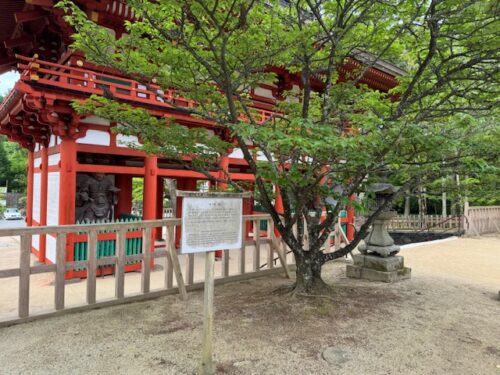
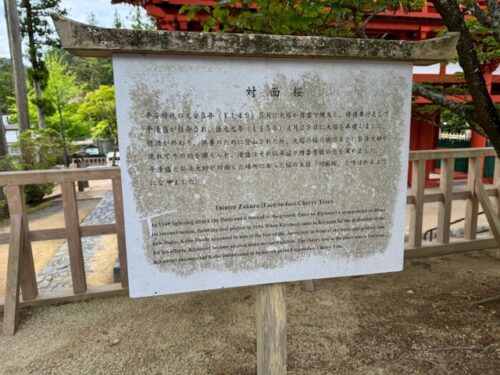
Kondo on Garan temple complex
When Kobo Daishi first opened Mount Koya, the Kondo was the first building constructed after the Main temple. At the time, it was referred to as the Kodo. Since the middle Heian period, it has served a key role as the central hall on Mount Koya.
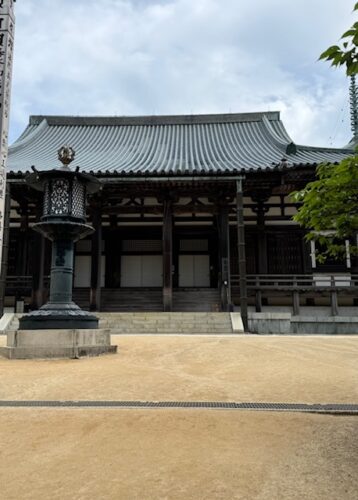
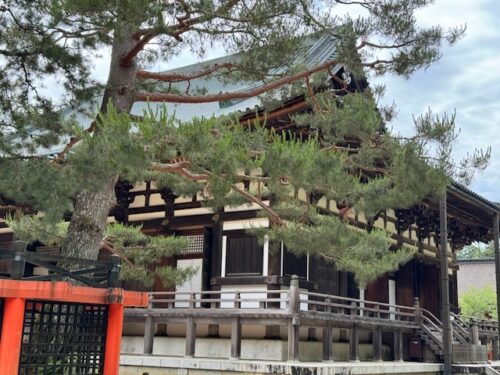
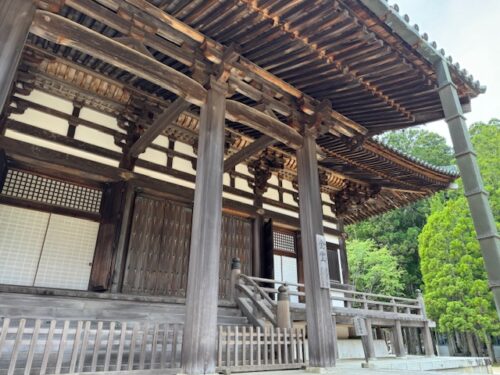
Other halls on Garan Temple Complex
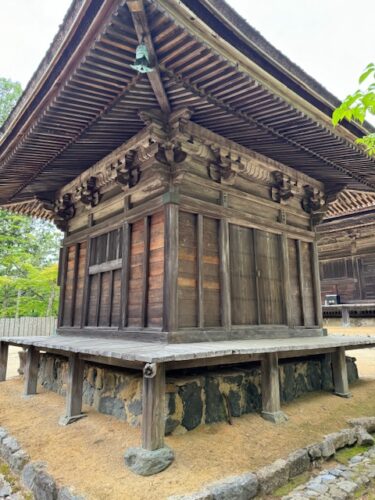
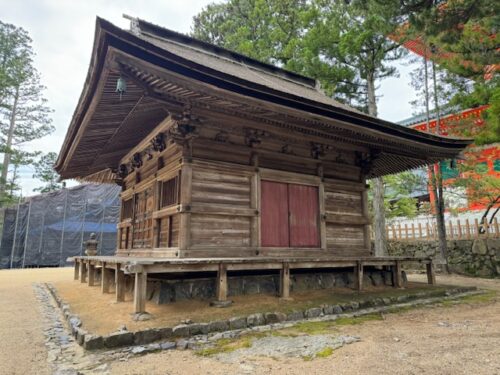
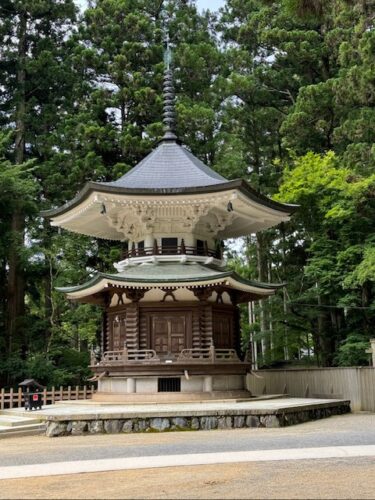
Rokkaku Kyuzo: (hexagonal or six-sided depository of the scriptures)
Biifukumon-in, the Empress consort of the “cloistered emperor” Toba, who was forced to abdicate the throne and become a monk, had this structure built to pray for her late husband’s happiness in the next world. The handles that extend from the base can be rotated after the pious act of reading the scriptures.
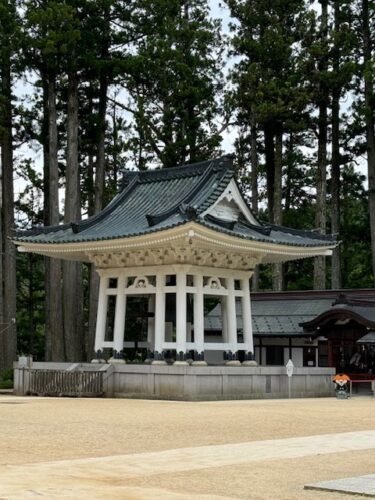
Saito Bell and Koyashiro
Trident pine at Garan Temple Complex
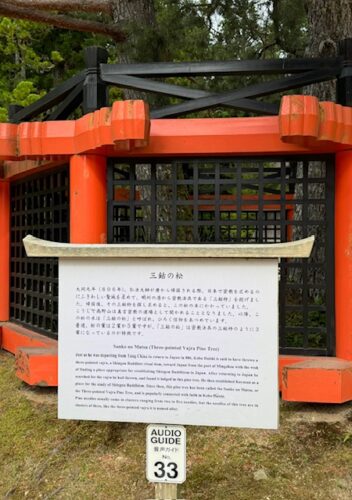
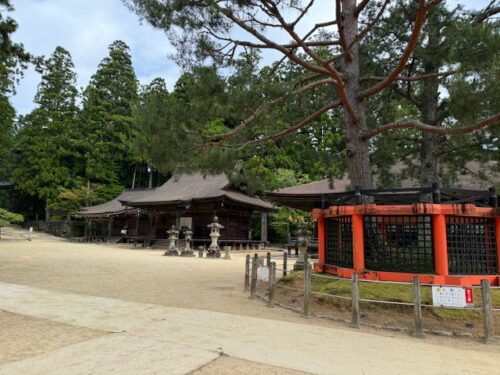
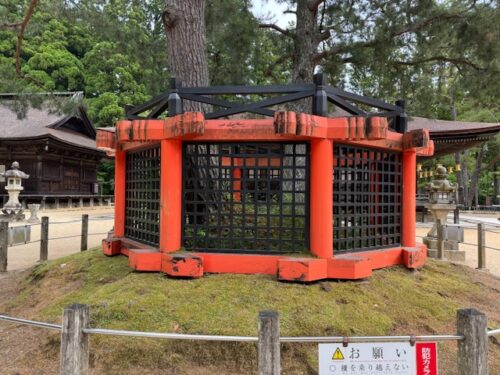
This tree is a popular site of visitors to Garan Temple complex because of the pine tree leaves.
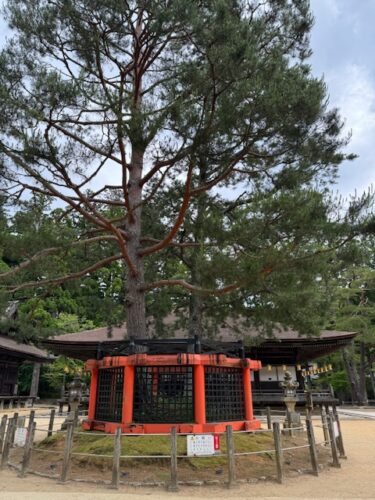
Trident Pine
This tree is treated as sacred site where a vajra thrown by Kukai from China landed. Upon its discovery, he decided then to end his search for a place to bring Shingon Buddhism here. Visitors can pick up the three-pronged leaves from the ground as talismans or lucky souvenirs.
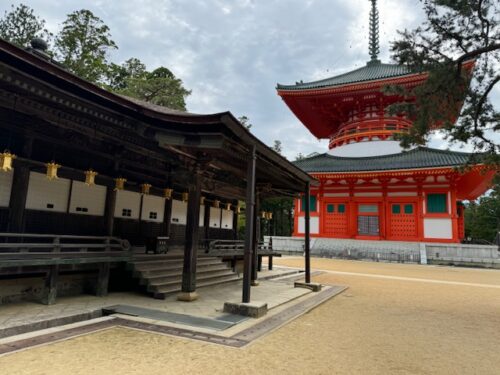
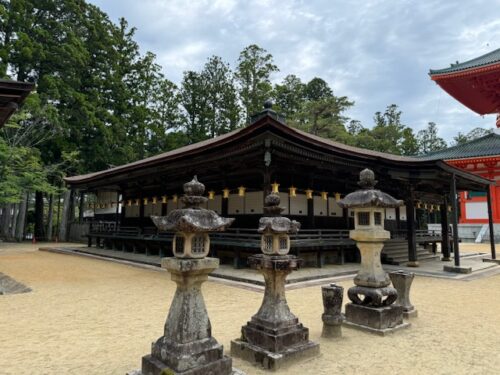
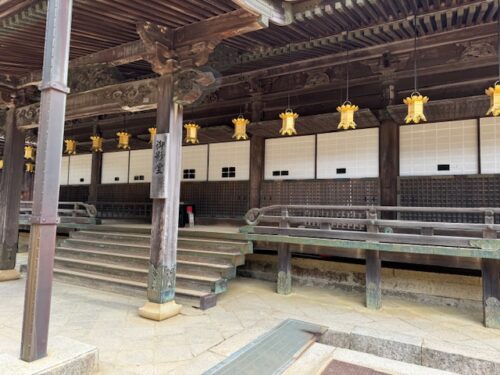
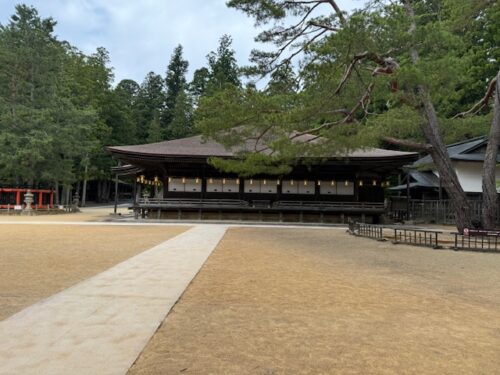
Miedo (Great Portrait Hall)
This was originally Kobo Daishi’s own training hall, this site was later used to enshrine an image of Kobo Daishi created by Takaoka Shinno, at which time it was given the name of “”Great Portrait Hall.”” It is lined with images of ten of Kobo Daishi’s disciples. The Miedo is considered the most sacred location on Mount Koya and Garan Temple complex. Only a select few were originally permitted to enter. However, on the night before the Chinese New Year (March 21), following a special service, lay visitors are permitted to enter the outer sanctum.
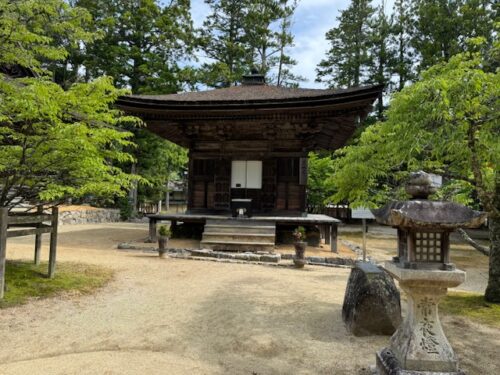
Sanmaido
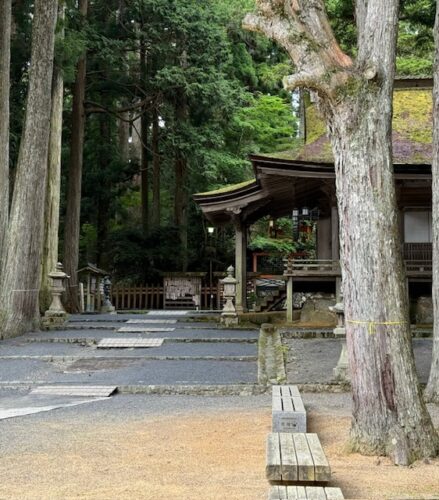
Sanno-in hall (refers to a local Shinto diety: god of the mountain). Important rites are held here.
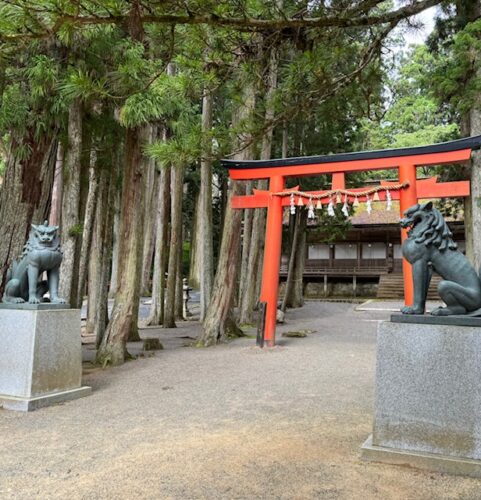
Miyashiro
The transfer of the Shinto diety from Tenno-sha to Mt Koya lead to syncretism of Shinto and Buddhist ideas.
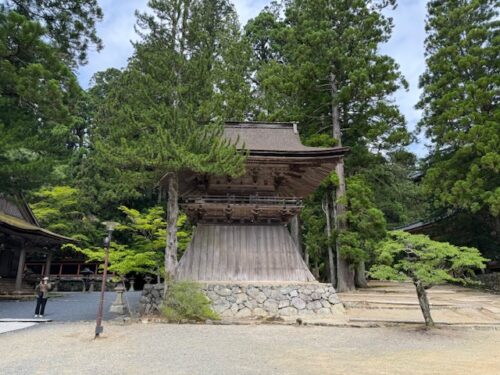
Jabara-michi
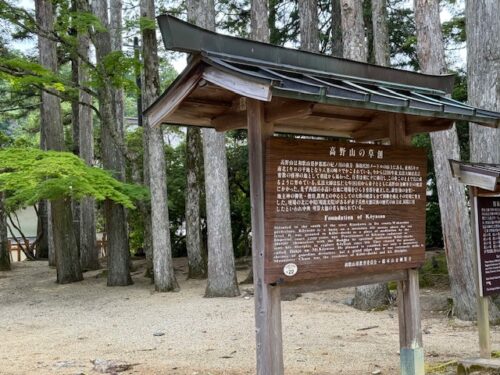
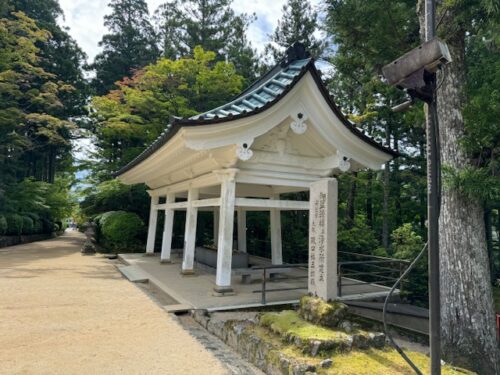
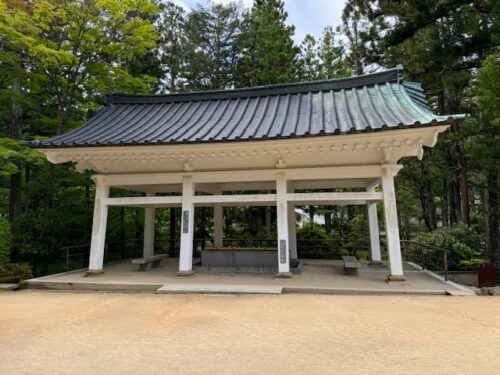
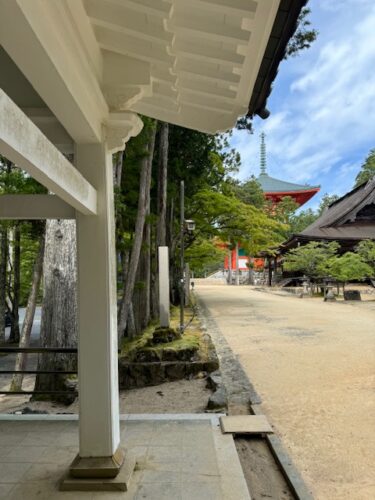
Other buildings at or near Garan Temple Complex
Nyonindo

In ancient times, there were nine entrances to Mount Koya, dubbed Koya-nanakuchi. In Meii 5 (1872), the ban on women entering the precinct was lifted. Until that time, women were strictly forbidden, so there were special prayer sites exclusively for them at each entrance. These were called Nyonindo. Today, there is only one Nyonindo that has survived the ravages of time. This nyonindo is a two-hour hike from Okunoin.
Also, the Koyasan Reihokan Museum is on the Garan temple complex. Many cultural assets and sacred relics are stored there.
Jabara-michi
The small path that winds its way from the entrance to the Garan towards the east side of the Toto pagoda is called Jabara-michi. It is regarded as an important entrance to Koyasan.
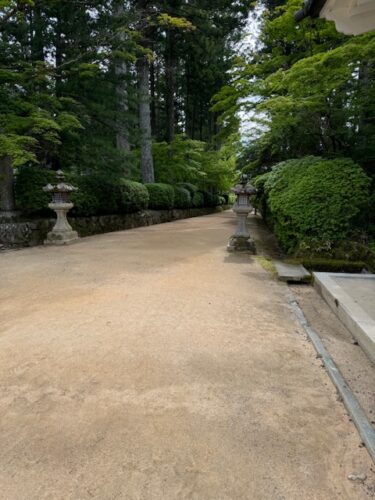
Kobo Daishi likened Mount Koya’s layout to the belly of a reclining dragon: the Danjo Garan is the head, with the area spanning up to Rengein being the figure of a dragon. The Jabara-michi happens to fall around where the dragon’s stomach would be, which is what the name of the path means (technically “snake’s belly.”
Not There Yet But I’m Closer Than I Was
Walking through the mishi put me in a contemplative state of mind to leave the Garan temple complex. I experienced the same fluttering in my stomach. It is a place that I just did not want to leave. I had to move on however, so that I could visit Okunoin, the site of Kōbō Daishi’s mausoleum.
See you next time at Okunoin.
Baadaye and Mata Ne (またね)
Shirley J ♥️
This and several posts this summer chronicled my pilgrimage in Japan where I walked the 1200 kilometer-long Shikoku 88 temple pilgrimage. Read my announcement here.
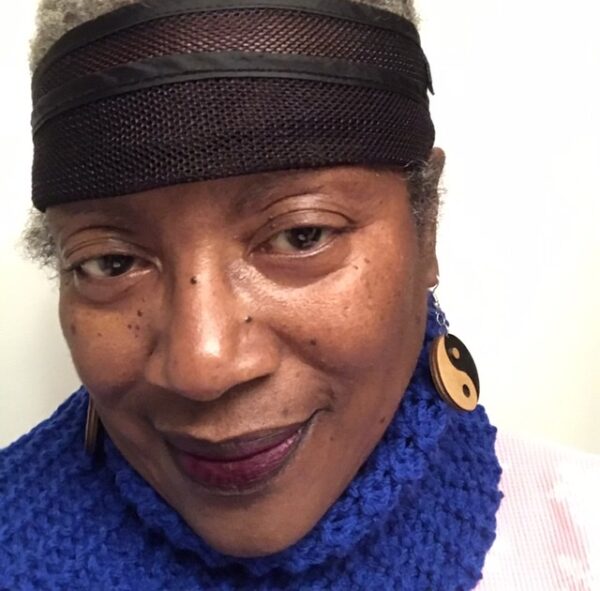
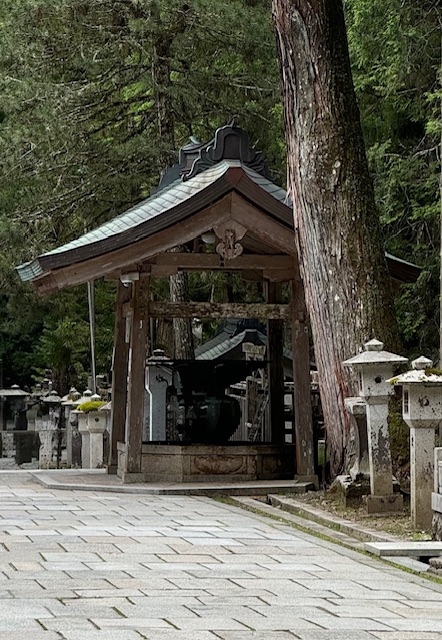
2 thoughts on “🌸 Noire Henro-san: Koyasan – Pt 1”
Wow! Quite a complex. Not sure what else to say, but it’s a lot to take in even without having been there.
You said it! I did not expect how much is in this complex let alone the rest of the town. 🌸🕉️
Comments are closed.